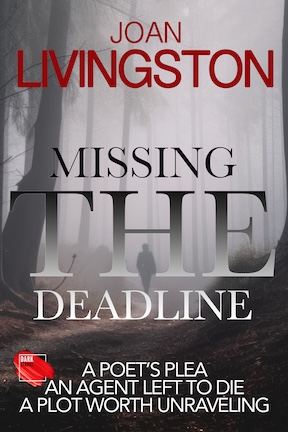I wrote this piece about Ed Dahill a couple of years before we moved to Taos in 2006. Ed was still the road boss and I was an editor for a daily newspaper when I interviewed him for a book I thought I’d write but didn’t.
It’s the second week in January, and a thaw is in the works after a stormy spell. The computer monitor in the Chesterfield Highway Garage is picking up radar from a satellite hookup. All’s clear today although rain was expected the next.
Ed Dahill, the town’s road boss, is sitting behind the desk, amused I called earlier to set up this talk. We’ve known each other since I was a reporter for the Daily Hampshire Gazette phoning him for news about a storm and other information. Often he’d be out on the roads, but if he got my message before we went to press, he’d get back to me.
Ed’s hair, straight to the collar, is gray now. His nose gives him a strong profile, and his skin is slightly tanned even though this is the dead of winter. He’s dressed to work outside.
The three-man crew would not be plowing this week, but Ed told me they’d be busy still. He had a list of repairs the trucks needed. The men do all the maintenance. How else could the town afford it, he tells me. One big tire for a truck costs $250 alone.
The highway garage is a cavernous place with pool-blue metal siding the town built in 1967 for $40,000. The inside smells of exhaust, but it’s as neat as a six-bay garage can be. I remind Ed that over the years the town has talked about fixing it. He laughs and says, “We’re still working on it.”
The walls of his office are painted a shiny road-sign green. Ed’s wedged in by filing cabinets filled with paperwork and shelves lined with catalogues and ball caps. A wild turkey feather is stuck in with the pencils on his desk. He says the two ornate tins held Christmas cookies, gifts from grateful residents.
The sticker on the front of his metal desk says: Don’t panic. Ed looks like he never does. He smiles easily even when we’re talking about a storm last week that dumped about a foot of wet snow. It packed hard on the roads and Ed didn’t like that. The plow clattered over the road’s surface. That left ridges. It was the kind of snow that needed a lot of salt, but then that would have made slush. If there’s going to be snow on the road, Ed says it should have a mealy consistency.
He started the job in January ’88 and before that he worked ten years for the highway department in his hometown of Huntington. He said when he’s on one spot on Bryant Street in Chesterfield, it’s three miles straight across to his house. He can make out the power lines. But there’s no direct way and he must swing around through another town to get to the highway garage. That takes 20 minutes.
Ed has an associate’s degree in engineering and one in liberal arts, but most of his knowledge about roads comes from on-the-job training and advice from veteran highway supers. It’s a little unusual the town hired an out-of-towner to be the road boss, but if anyone was bothered, they’ve gotten over it, because Ed puts in the extra time. He laughs. “Yeah, I’m a foreigner. A lot of good it does me.” He pulls out the Chesterfield telephone book, about as big as an owner’s manual, and shows me his name and home phone number printed on the back page. He laughs again. So much for living out of town.
Ed talks about some of the other work his crew does: roadside mowing, grading the dirt roads in the spring, and patching holes. Since he arrived they’ve rebuilt a mile of road a year, tackling the work instead of farming it out. The first job, on Ireland Street near the Chesterfield Gorge, has held up nicely still.
In all there’s 56 miles of roads; a little more than half are paved. In the spring the crew will begin paving Sugar Hill Road, now a dirt way. That idea by the board of selectmen raised a big stink last year.
People on the road were divided about it. It seemed as if the newcomers who moved there for its rural charm wanted to keep it dirt. Those who had lived there longer were fed up with the mud and ruts. Ed, who got caught in the middle, says the road built up fast, with 40 houses on a 1.8-mile stretch. The road in its present condition can’t handle that kind of traffic.
Ed is an admitted weather-addict, constantly checking the weather at home. The satellite feed at work came six years ago. He leaves his house at soon as the first snowflakes start. Most storms come from the south and west, where Huntington is situated to Chesterfield. “They hit my house first,” he says.
If it’s night, the owner of the town’s only store leaves a large thermos of coffee for the men.
Matt does the western end of town. He has Ed’s old route and the newest truck, but Ed says he likes to keep good workers happy. He and Luther divide up the rest of the town. Part-timers come in to help with the back roads.
Ed says he doesn’t think too much when he plows. He listens to music and keeps in touch with the other men by mobile radio.
He remembers one blizzard a few years ago in which the visibility was so poor he didn’t see the other plow truck until they were on top of each other. He pulled the men off the road then. If a car had broken down, they would have run over it.
The worst he remembers was an ice storm New Year’s Day in 1982 when he was still on the Huntington crew. The roads had two inches of ice. He had to back the truck up a steep hill so he could ride over the sand, but by time he got to the top it had iced over so fast he couldn’t get back down. He had to radio another sander to rescue him.
Complaints? He says he doesn’t get many. Three or four hours after a storm the roads are cleaned up, ready for the next one. The crew takes a lot of pride in their work. When they reach another town’s line – Chesterfield borders four – they like to see if they’ve done a better job. He smiles. He says they usually do.


